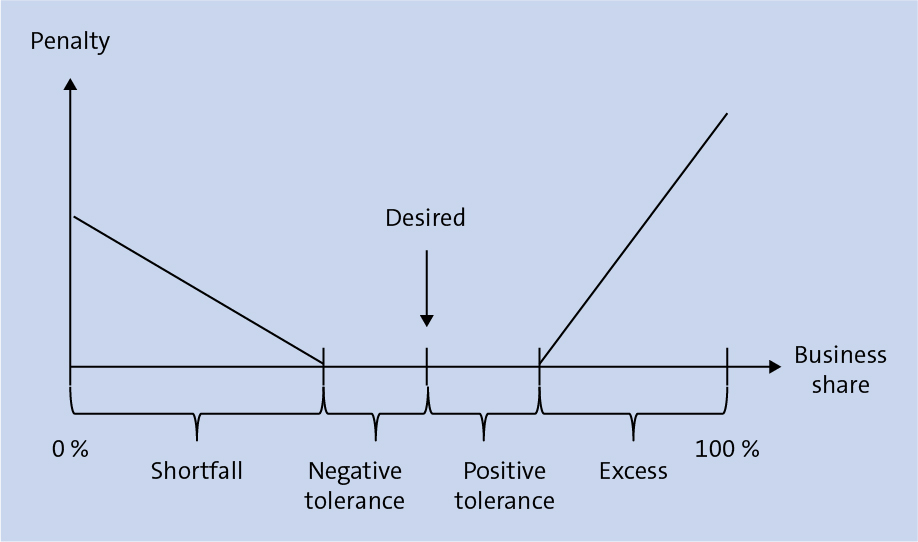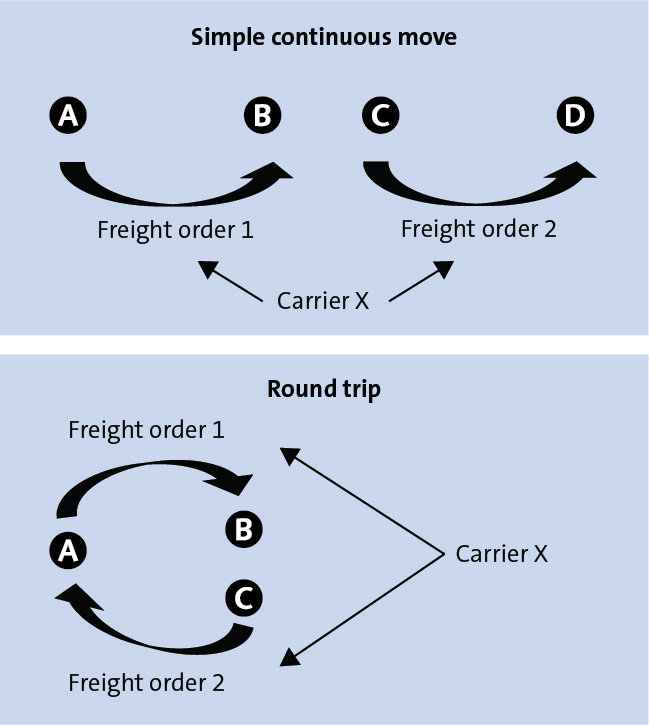The primary objective of carrier selection in SAP TM is to assign a reliable and cost-efficient carrier to a freight order.
This can be done in the background, interactively using manual steps, or by using an automated optimization procedure. This is the option that we’ll take a look at in this blog post.
Carrier Selection Objective
The objective of carrier selection is to assign the most suitable carrier to a freight order, which usually means assigning the cheapest one. However, there may be criteria other than cost involved, such as whether another carrier needs to be assigned to a defined minimum transportation quantity based on contractual obligations (minimum transportation allocation), which can force an assignment even if that carrier is more expensive for a specific freight order.
Carrier Selection Optimizer
The carrier selection optimizer converts the assignment problem into a mixed-integer linear problem (MILP). Based on the number of freight orders, the complexity of the constraints, and whether the runtime specified in the carrier selection settings is carefully chosen, the carrier selection optimizer usually returns the optimal solution. If the runtime isn’t sufficient to determine the optimal solution, the best solution found within the specified runtime is returned.
Automatic carrier selection is based on an optimization algorithm that minimizes costs. The algorithm considers multiple cost components:
- Transportation charges for the freight orders of the assigned carrier: The transportation charges of the assigned carrier are often the only relevant cost component. For each freight order, the transportation charges are evaluated for all available carriers. The transportation charges can have two different origins. The transportation charges are calculated either via Transportation Charge Management and thus represent the expected real freight cost for a freight order or via internal costs. Internal costs can be defined in the transportation lane master data or, if they don’t depend on the geography, in the carrier profile. You can also use a combination of both, if required.
- Nonassignment charges for freight orders to which no carrier could be assigned: While the objective of carrier selection is to find an assignment of a carrier to each freight order, it’s not always possible, and the result is nonassignment. For example, finding a carrier may not be feasible because it would violate the maximum transportation allocation of all possible carriers. Because this situation should be avoided, the system defines a penalty cost for not assigning any carrier to a freight order. This penalty can’t be influenced by the user and is calculated to be prohibitively high to outweigh the other cost components and avoid nonassignment charges.
- Penalty charges for violating minimum transportation allocations: If minimum transportation allocations refer to a monthly quantity, these may often not be fulfilled in the beginning of the month. Thus, minimum transportation allocations can’t be considered a hard constraint because if there aren’t enough freight orders waiting for assignment, it’s impossible to fulfill all minimum transportation allocations. Therefore, this constraint is considered a soft constraint, and violation of minimum transportation allocations is penalized by costs. Similar to nonassignment charges, this penalty cost is calculated automatically by the system and set higher than the other cost components to avoid violation, if possible.
- Penalty charges for noncompliance to business shares (outside negative and positive tolerance): Business shares can be defined to yield a predefined distribution of freight orders among several carriers. This constraint can be used due to contractual obligations or simply to avoid assigning all freight orders to one carrier and therefore becoming too reliant on this carrier. To allow the assignment of carriers that have higher transportation charges, noncompliance with defined business shares is penalized, as outlined here:

A negative and positive tolerance can be defined based on a desired business share for a carrier; actual business shares within these tolerances are cost free. A shortfall of the desired business share minus the negative tolerance or an excess assignment beyond the desired business share plus the positive tolerance is penalized with different penalty costs. Because the user is allowed to specify these penalty costs, he can influence to what extent the consideration of business shares overrules the assignment of carriers based on transportation charges.
- Discounts granted by the creation of continuous moves: In certain situations, carriers grant discounts to transportation charges. These discounts are also taken into account by the carrier selection optimizer
Continuous Moves
Sometimes carriers grant discounts if they are assigned several freight orders for the same vehicle resource because the incentive reduces effort on their end to look for additional freight after having completed a single freight order. This situation is addressed in carrier selection by defining continuous move options. When carrier selection allows it, continuous moves are a way to save money on transportation costs.
Continuous moves may be offered for transports between regions that have economic disparities, such as mainland Europe and the United Kingdom. Because many more goods are transported from mainland Europe to the United Kingdom, many trucks have to return empty from the United Kingdom. A carrier may therefore be inclined to offer a discount on the transportation charges if it’s also offered to transport freight on the return trip.

The figure above shows two continuous move types, which are defined below.
Simple Continuous Move
There is no relation between the destination of the second freight order D and the source of the first freight order A. Only the destination of the first freight order B and the source of the second freight order C have to be close.
Round-Trip Move
The destination of the second freight order and the source of the first freight order have to match A. In addition, the destination of the first freight order B and the source of the second freight order have to be close C.
Closeness
A round-trip is limited to two freight orders, whereas an unlimited number of freight orders can be combined by simple continuous moves. Closeness, or proximity, has the following two dimensions and is defined in the transportation lane.
Distance
A continuous move provides commercial benefit to the carrier only if the source of the second freight order isn’t too far away from the destination of the first freight order. A maximum distance can be defined in the transportation lane master data.
Time
The departure time of the second freight order has to be reasonably close to the arrival time of the first freight order. It doesn’t help the carrier if his vehicle has to wait for a week. Therefore, time constraints for these windows are also defined in transportation lane master data.
The continuous move types allowed for a carrier are also defined in the transportation lane and therefore can deviate by geography. In addition, the carrier needs to be marked as eligible for offering discounts on continuous moves in the carrier profile (Continuous Move checkbox).
If certain freight orders shouldn’t be combined in a continuous move—even if these definitions would allow it—this can be specified via an incompatibility of type 82.
Before the carrier selection optimizer is started, an evaluation is carried out regarding whether two or more freight orders and carrier assignments qualify for continuous moves. These continuous move opportunities and their associated discounts are then provided as additional information to the optimizer, which takes these discounts together with the other cost components (freight charges, penalties) into account when calculating the optimal (cost minimal) solution.
If two or more freight orders build a continuous move, this is identified by a continuous move ID that is visible in the freight order.
Combining Carrier Selection Priorities
While cost is the most obvious objective, carrier selection can also be based on priorities or a combination of priorities and costs as an alternative. Using priorities may be an option if the focus of the implementation project is planning, and it’s deemed to be too much effort to actually set up Transportation Charge Management or internal transportation costs. If the contractual setup with carriers allows you to express preferences based on geographical information (transportation lane master data), priorities can be used as a selection criteria for carrier selection.
One way of combining priorities and costs is to use the multiplication of both numbers as a decision criterion (priorities × costs). In this case, priorities can be interpreted as a key performance indicator (KPI) for carrier reliability. A value smaller than 1 indicates a bonus in the selection because of good customer service, whereas a value larger than 1 corresponds to a disadvantage, which increases the perceived costs of this carrier. Similarly, you can argue for using the sum of both decision criteria (priorities + costs).
Conclusion
As you can see, selecting a carrier in SAP TM isn’t as simple as looking at quoted cost. Additional considerations such as time to delivery and closeness of a carrier to another freight depot must be explored. Using an automated optimization procedure like the one outlined above can make choosing a carrier less a matter of gut feeling and more a matter of data-driven decision making.
This content was originally posted on the SAP PRESS Blog and has been adapted from a section of the book Transportation Management with SAP by Bernd Lauterbach, Stefan Sauer, Jens Gottlieb, Christopher Sürie, and Ulrich Benz. Used with permission of SAP PRESS. All rights reserved.

Comments